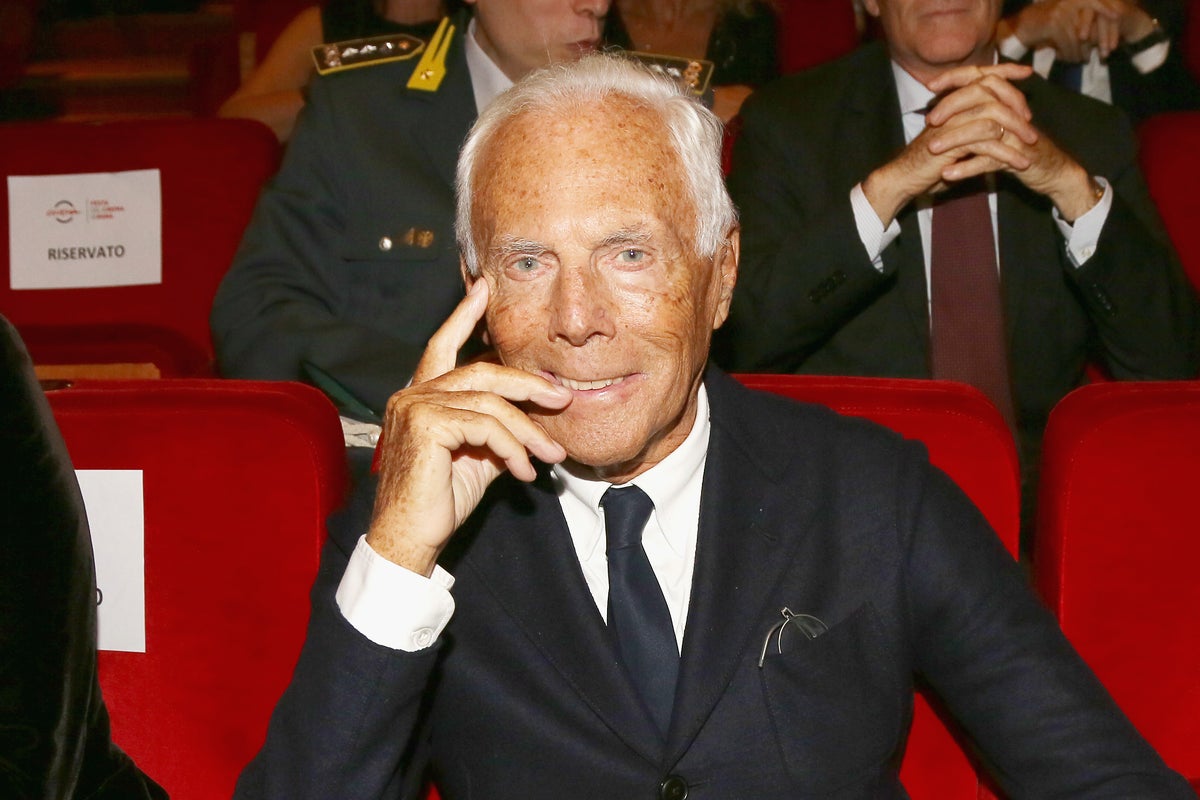Wesson's rebrand—how the cooking oil's long overdue refresh came together
The cooking oil, which retained its Florence Henderson-inspired ‘Wessonailty’ despite decades of silence, introduces a classic redesign aimed at the grandchildren of its fans.

The venerable cooking oil brand Wesson has undertaken a long overdue brand refresh with a challenging goal—marketing to consumers who may not be old enough even to remember the last time Wesson ran an ad campaign.
The brand refresh, which includes an update of its logo and packaging, a digital ad campaign, and retail point-of-sale materials, represents the first new ads for Wesson in nearly 30 years, said Irman Webb, director of U.S. retail sales at Richardson International, the Canadian agribusiness concern that acquired the Wesson brand from Conagra Brands in 2019. (A brand manager for its then-parent was already confessing neglect as far back as 1998, according to an Ad Age story at the time.)
Remarkably, Wesson has remained the top national brand of cooking oil by volume despite this inattention, a phenomenon that speaks not only to enduring brand strength but the potential inherent in a new push, said Webb. A recent study conducted by Richardson, for example, revealed that many consumers say they have seen a Wesson commercial on television in the last two years—even though it had been more than 20 since the last one ran.
“This could be a Harvard Business School study,” Webb said in an interview. “I like to say this could be the longest-lasting advertising halo that a brand has ever had. I really do think there is something to be studied here: This brand has been so resilient. And as a brand marketer, I’m excited to see how it will respond to its first marketing campaign in decades.”
Webb, a former Kraft marketer who worked as a Wesson brand manager with Conagra and subsequently with Richardson, ascribes Wesson’s enduring consumer memory to strong affinity, particularly with Black consumers, as well as an association with the brand as an ingredient of passed-down family recipes—a theme explored in its new ads—and to rich legacy advertising led by a longtime spokesperson, actress Florence Henderson. Best remembered as mom Carol Brady on the iconic 1970s sitcom "The Brady Bunch," Henderson sang about the brand’s “Wessonailty” as part of a marketing gig that produced television commercials from 1976 to at least 1992.
Fresh design
For Wesson’s refresh, Richardson engaged Jackman Reinvents for branding and advertising; Basis for media; and Neat for public relations.
Jackman’s update of the Wesson logo recalls the bold colors and distinct typography of the iconic 1964 Wesson label design by the famed graphic designer Saul Bass. Bass’s other branding logos include The Bell System, United Airlines and Geffen Records—and was more famous for decades of work creating movie posters and/or title sequences for classic films, from "North by Northwest" to "Goodfellas."
Webb said the logo would trigger recall for those who grew up with Wesson. For consumers who may not be as familiar with the brand, the new look emphasizes the single-ingredient wholesomeness of the product. An engraved bottle cap and label graphic salutes Wesson’s longtime manufacturing home and heritage, reading: “Pure. Established 1899. Memphis USA.”
“Our loyal consumers will see how we pay homage to our past,” Webb said, “and for older millennials. they'll see a clean fresh label that we hope, really drives home purity.”
Wesson’s new ads similarly meld generations. A 30-second spot called “Aunt Clara’s Cake” introduces a young adult home cook named Lucinda who hears the voice of her late Aunt Clara guiding her as she attempts to recreate her aunt’s chocolate ganache cake exactly as Clara always made it—with Wesson. Separate 15-second and 6-second spots use the same characters in more humorous settings after the cake is complete: In one, Lucinda hears Aunt Clara’s encouragement to give in to temptation and treat herself to another slice. In another, there’s a sassy exchange where a confident Lucinda informs Aunt Clara that the cake is not her recipe anymore. “It’s mine now.”
All of the ads introduce a new tagline, “Taste what you love.”
Webb said the ads acknowledge Wesson’s aging but loyal consumers while confronting the brand’s central challenge.
“The clock doesn’t go backwards,” he said. “Loyalty to the brand exists with an older consumer—we do very well with Boomers and older Gen X—and that group just keeps getting older. And so from a branding and marketing standpoint, you have to be relevant to younger consumers. That was the first thought we had—how do we keep our staunchest supporters loyal, and how are we going to get through to their grandkids? We also had to do that while staying true to what Wesson is, and has been.”
The ads will air on social channels and get paid digital media support, Webb said. At retail, shelf bumpers will alert consumers to the new look and message. More traditional channels including TV are a “possibility” Webb said, but have not been contemplated as part of the refresh. The brand did not disclose what it is spending on the new marketing.
Cooking again
Private label brands today remain the category’s biggest seller, said Webb. Wesson, with an estimated $250 million in annual sales, would be next. The entire category is riding a boost from the 2020 coronavirus lockdown, which reintroduced consumers to their kitchens and sparked renewed interest in home cooking and baking—major use cases for their products.
“Over the last two years people have baked and cooked at home and we did see a lift related to that,” said Webb. “Some studies have also shown that consumers liked it, and that behavior of cooking at home will continue. They’ve realized this is enjoyable, it’s family time, that it’s fun to make a cake—and the payoff is delicious.”
Webb said that trend—along with the overarching health-and-wellness movement playing to strengths of heart-healthy pure-food ingredients like canola oil—are providing momentum to the category. The new ads from Wesson can add to that. Wesson's varieties include corn oil, canola oil, vegetable oil (which is soybean oil) and Best Blend, a mix of canola and soybean oil. Asked if Wesson finds competition from olive oil brands, Webb said: "Olive oil is a different use. I've never baked with it. It's the same category, but quite a different subcategory."
In terms of calculating the success of the campaign, Webb said he would “go back to the brand manager playbook” and chart metrics like brand awareness, purchase intent and IRI sales figures. Though unlike typical assignments, Wesson’s lack of a recent history could make that assessment somewhat challenging.
“In my Kraft days, when I was looking at a campaign for Philadelphia cream cheese, you had something to compare the campaign to, you had recent history. Here, we don’t,” said Webb. “So it will be very interesting to see how Wesson responds to its first campaign in so many years.”
The Henderson era
Wesson traces its roots to 1899, when food scientist David Wesson debuted a brand of shortening based on a method he had developed to produce an edible cottonseed oil he called Wesson’s Snowdrift. A liquid vegetable oil followed a year later—an introduction that the brand said “transform[ed] the way America's households cooked,” by offering a healthy alternative to what then was a common practice of cooking with animal fats.
Wesson’s long stretch of advertising darkness followed a series of business deals beginning in the 1980s that rapidly passed the brand between corporate parents (Norton Simon, Esmark, Beatrice, KKR and Conagra all claimed ownership of Wesson over an eight-year span). At Conagra, said Webb, Wesson was a “steady performer,” although the company often had bigger priorities than promoting a well-known brand in a slow-growing category.
Henderson, who passed away in 2016, said in interviews that her association with Wesson lasted 22 years, or until about 1998. At any rate, as advertising icons go, the last generation’s Flo (Henderson) endured at least as long as this generation’s Flo (Progressive’s fictional spokesperson, played by actress Stephanie Courtney, who has starred in those ads since 2008).
Tapping into Henderson’s background as a big-throated Broadway singer, and her equity as America’s most stylish and sensible mom from her role on "The Brady Brunch "(even though Alice commanded that show’s kitchen), Henderson was brought to Wesson by agency BBDO and its legendary executive Jim Jordan. In addition to coining the “Wessonality” slogan, Jordan was responsible for memorable consumer packaged goods hooks like “ring around the collar,” “Zest-fully clean” and “It’s the right thing to do,” for Quaker oatmeal.
Henderson sang “Wessonality” to the tune of Lloyd Price’s 1959 hit, “Personality,” but retained a role in the brand’s ads long after that slogan was retired. She said her engagement spanned five separate advertising agencies—and, as her ads over the years illustrate, about as many hairstyles.
In 2017, Conagra agreed to sell Wesson to J.M. Smucker Co., only to see the $285 million deal unravel when the Federal Trade Commission raised concerns of a cooking-oil monopoly related to Smucker’s control of Wesson’s top branded rival, Crisco.
That event provided an opening for Richardson, known as Canada’s largest agribusiness company. Richardson made no secret of its intention to reinvigorate the dormant brand, the first efforts of which are now reaching consumers.
“They understood this brand was primed to go to the next level,” said Webb, who arrived at Richardson shortly after Wesson did. “This brand was very resilient and retained its equity. Just imagine what you could do if you actually refreshed the brand, and got people talking about it again?”
When the Smucker-Conagra deal dissolved in 2018—the FTC had argued that Wesson and Crisco together would exceed 70% of the branded cooking oil market—Smucker executives cried that regulators had overlooked the growing influence of store-brand oils which by then had collectively captured 50% of the U.S. cooking oil market. They were the biggest beneficiaries of Wesson’s long period of brand silence.
Below, some more classic ads from the Henderson era.

 Fransebas
Fransebas 



















.jpg&h=630&w=1200&q=100&v=6e07dc5773&c=1)












